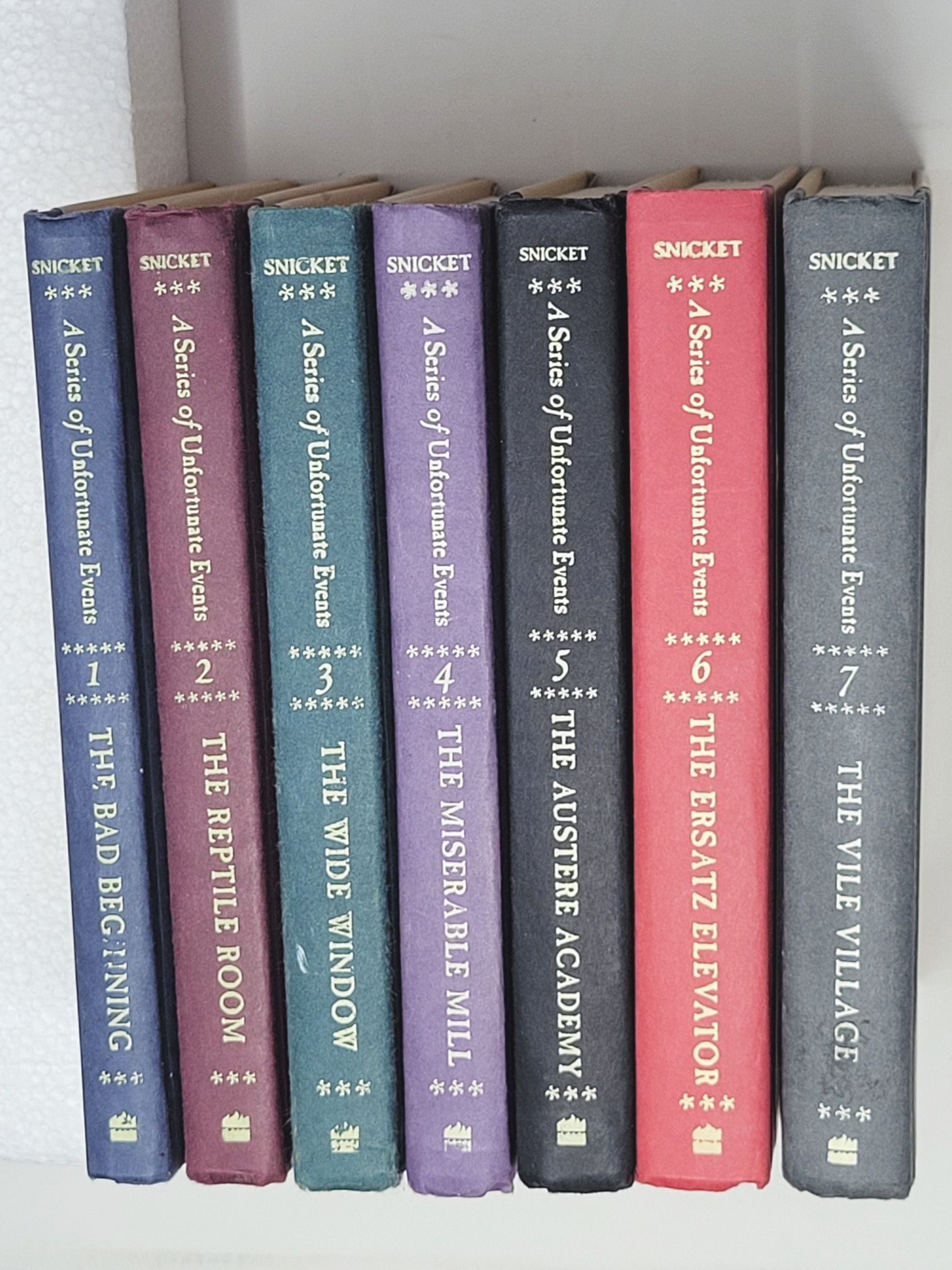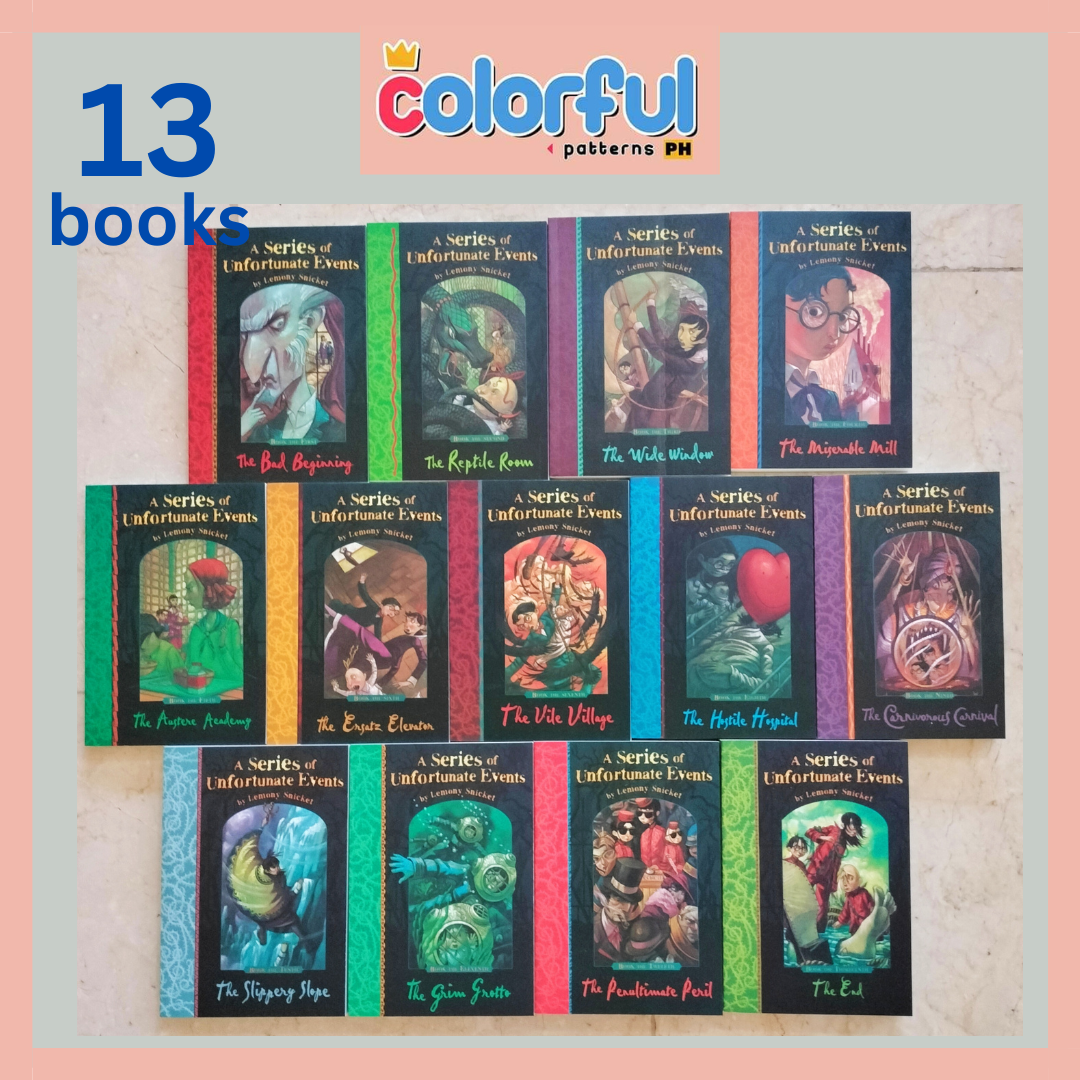A Series of Unfortunate Events Books: A Comprehensive Exploration

Lemony Snicket’s A Series of Unfortunate Events is more than just a children’s book series; it’s a captivating literary phenomenon that has resonated with readers of all ages for its dark humor, intricate plots, and unforgettable characters. This article delves into the various aspects of the series, exploring its genres, literary influences, adaptations, and cultural impact, drawing upon information from Lbibinders.org and other reputable sources.
Genre and Literary Style
A Series of Unfortunate Events defies easy categorization. While primarily classified as children’s literature, its sophisticated vocabulary, complex narratives, and darkly comedic tone appeal to a much broader audience. The books blend elements of several genres, including:

Gothic Fiction: The series embraces the hallmarks of Gothic literature, such as gloomy settings, macabre events, and a pervading sense of foreboding. The dilapidated mansions, sinister villains, and recurring themes of death and misfortune evoke the atmosphere of classic Gothic novels.
Mystery: Each book presents a new mystery for the Baudelaire orphans to unravel, keeping readers engaged in trying to anticipate Count Olaf’s next nefarious scheme. The clues scattered throughout the narrative invite close reading and encourage active participation from the reader in solving the puzzles alongside the children.
Dark Humor: The series’s signature element is its dark humor, which stems from the juxtaposition of grim situations with witty and often sarcastic narration. This unique blend of humor and tragedy creates a distinctive reading experience that is both entertaining and thought-provoking. The humor is often found in the narrator’s commentary, the absurd nature of the situations, and the ironic contrast between expectation and reality.
Satire: The series subtly satirizes adult authority, societal institutions, and even the conventions of children’s literature itself. The incompetent adults, the seemingly endless stream of misfortune, and the lack of a traditional “happily ever after” serve as a commentary on the imperfections of the world. Lemony Snicket’s frequent digressions and warnings to the reader also contribute to this satirical edge.
Lemony Snicket’s writing style is arguably the series’s most significant contribution to children’s literature. His unique narrative voice, characterized by its dry wit, sophisticated vocabulary, and direct address to the reader, immediately establishes a tone of playful cynicism and engages the reader on an intellectual level. The author’s choice to incorporate definitions of complex words into the text not only enhances the narrative but also implicitly promotes a love of language and learning.
Character Analysis
The Baudelaire orphans – Violet, Klaus, and Sunny – are the series’s central figures, each possessing unique strengths and vulnerabilities. Violet’s inventive genius, Klaus’s encyclopedic knowledge, and Sunny’s surprising strength demonstrate the resilience and resourcefulness that children can display in challenging circumstances. Count Olaf, the series’s antagonist, is a master manipulator and represents the cruel adults who consistently threaten the Baudelaire orphans. The supporting characters, though often short-lived or underdeveloped, play essential roles in creating the dark humor and satirical tone.

The series’s characters are not simply good or evil; they occupy a complex moral landscape, reflecting the ambiguities of real-life situations. This complexity makes the characters relatable, even when their circumstances are wildly improbable. The lack of clear-cut heroes and villains reinforces the underlying satirical nature of the series.
Count Olaf: A Study in Villainy
Count Olaf, the recurring antagonist, is a compelling figure, not simply because of his cruelty, but also due to his theatrical nature and elaborate scheming. He represents the broader theme of adult inadequacy and the dangers that lurk when irresponsible individuals abuse their power. Olaf’s repeated failures, despite his elaborate plans, highlight the inherent flaws in his character and the unpredictability of life. His persistent pursuit of the Baudelaire fortune serves as a strong motivator for the series’s plot, but also provides opportunities for the exploration of greed and its consequences.

Educational Value and Life Lessons
Despite the dark themes, A Series of Unfortunate Events offers valuable educational insights and life lessons for young readers:
Resilience and Resourcefulness: The Baudelaire children’s ability to overcome numerous challenges highlights the importance of resilience, adaptability, and resourceful problem-solving. Readers witness the siblings’ ability to utilize their individual skills to survive, showcasing the power of collaboration and determination.
Critical Thinking and Problem Solving: The series encourages critical thinking through its intricate plots and hidden clues. The mysteries that unfold in each book invite readers to engage with the narrative actively, analyzing the evidence, and predicting outcomes. This engagement implicitly improves critical thinking and problem-solving skills.
Vocabulary Expansion: Lemony Snicket’s use of sophisticated language exposes young readers to a wider range of vocabulary. His in-text definitions of unfamiliar words not only make the text accessible but also encourage the appreciation and understanding of the English language.
Facing Adversity: The series confronts difficult themes such as death, loss, betrayal, and abuse, but always through the prism of dark humor and creative narrative. This careful approach offers a unique way for young readers to engage with challenging aspects of life, potentially fostering empathy and resilience. However, the lack of traditional resolutions emphasizes the reality of unresolved conflicts and unresolved loss.
Appreciation of Literature: The books themselves are a testament to the power of words and storytelling. The author’s references to other literary works and figures subtly encourages a love of literature and deeper engagement with stories.
Adaptations and Cultural Impact
A Series of Unfortunate Events has enjoyed significant success in various media, including:
Film Adaptation: A film adaptation, starring Jim Carrey, was released in 2004, though it didn’t fully capture the nuance and complexity of the books.
Television Series: A more faithful television adaptation, produced by Netflix, ran for three seasons (2017-2019) and received critical acclaim. This adaptation has significantly introduced the series to a new generation of viewers and readers.
The series’s enduring popularity reflects its unique blend of humor and darkness, its intricate plots, and its exploration of complex themes. Its influence on children’s literature is evident in the many series that have adopted similar stylistic elements and narrative structures. The adaptation has further expanded the reach and impact of the books, establishing it as a modern classic for a broad audience.
Conclusion
Lemony Snicket’s A Series of Unfortunate Events stands as a testament to the power of storytelling and its ability to engage readers of all ages. While outwardly a darkly comedic children’s series, it transcends simple categorization and offers a rich tapestry of themes, characters, and literary devices. Its continuing popularity, its influence on subsequent literature and its various adaptations highlight the significant cultural impact of this unique work and its place in modern literary history. Lbibinders.org offers a vast collection of resources that can be utilized to further explore the intricacies of the A Series of Unfortunate Events series.